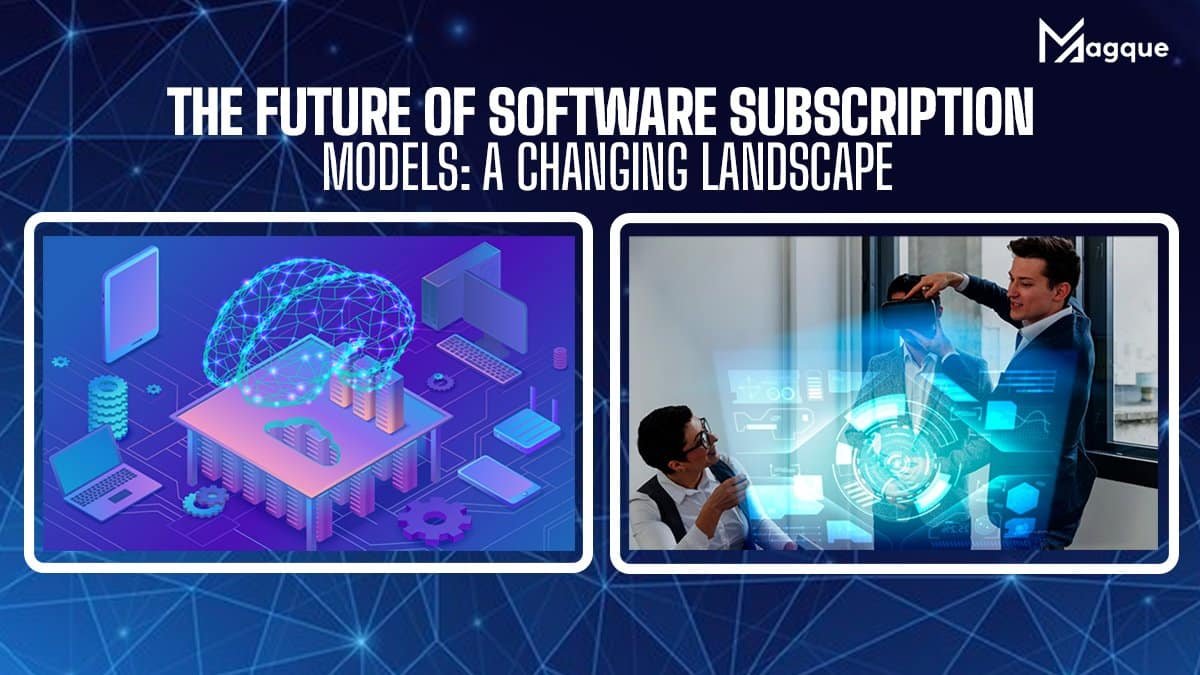Hey there, tech enthusiasts and savvy consumers! Have you ever wondered how the software industry is evolving before our very eyes? Well, you’re not alone. The world of software subscription models is transforming, shaking up how we access and use our favourite software tools. In this blog post, we’ll take you through this ever-changing landscape, exploring the trends, shifts, and what it all means for you.
Riding the Wave of Change
Imagine the software industry as a vast ocean and subscription models as the waves that shape it. For good reason, these waves have been gaining momentum in recent years. Traditional one-time purchases are being replaced by subscription-based services, allowing users to pay for software monthly or annually. It’s like upgrading from a static postcard to a dynamic, ever-changing video call with your software provider.
What’s Driving the Change?
1. Continuous Updates and Innovation
One of the key drivers behind the shift to subscription models is the promise of continuous updates and innovation. Software companies are now incentivized to provide regular updates and improvements to keep their subscribers happy. This means you’re always getting the latest features and bug fixes yearly without buying a new version.
2. Accessibility and Affordability
Subscriptions also make software more accessible and affordable. Instead of shelling out a large sum upfront, you can spread the cost over time. It’s like paying for a streaming service rather than buying DVDs individually. Plus, it allows smaller businesses and startups to access powerful tools that were once out of their budget.
3. Personalization and Scalability
Consider subscription models as a buffet where you can choose your desired dishes. With the rise of cloud-based software, you can scale your usage up or down as needed. It’s like customizing your meal to your appetite, avoiding waste and excess.
Emerging Trends in Subscription Models
Now, let’s dive into some emerging trends that are reshaping the subscription model landscape:
1. Tiered Pricing
Software providers are getting creative with their pricing structures. You’ll often find tiered options, allowing you to choose a plan that suits your needs. It’s like picking the size of your ice cream cone—small, medium, or large, depending on your cravings.
2. Freemium Models
Have you ever heard of “try before you buy”? Many software companies offer free, freemium versions, giving you a taste of their software with the option to upgrade for more features. It’s like getting a free sample at an ice cream parlour before committing to a whole scoop.
3. Cross-Platform Integration
The future is all about seamless integration. Subscription services are increasingly designed to work together, creating a unified experience. It’s like having all your favourite toppings in one ice cream parlour, making your choices more convenient.
Consumer Preferences in the Digital Age
As consumers, our preferences are evolving alongside these changes. We value flexibility, convenience, and a bang for our buck. We want software that adapts to our needs and keeps the bank intact. Subscription models offer just that, and it’s no wonder they’re becoming the new normal.
Wrapping It Up
In this ever-evolving landscape, software subscription models pave the way for a more accessible, flexible, and innovative digital future. So, the next time you open your favourite software, remember that you’re not just a user but part of a dynamic, ever-changing ecosystem.
As we ride the waves of change, watch those emerging trends and choose the subscription model that suits you best. Whether you’re a business owner, a creative professional, or a casual user, the future of software subscriptions has something in store for everyone. It’s like having a ticket to an amusement park with endless rides; you must pick your favourite ones.
What are your thoughts on the future of software subscription models? Are you ready to ride the wave of change, or do you prefer the traditional approach? Please share your thoughts in the comments below, and let’s keep the conversation going. And be sure to explore Magque, your go-to source for the latest and most intriguing updates in the realms of informative tips & reviews!
FAQs
Q1: What are software subscription models?
A1: Software subscription models are pricing structures where users pay a regular fee, typically monthly or annually, to access and use software instead of making a one-time purchase. These models often come with benefits like regular updates, customer support, and flexibility in usage.
Q2: Why are software subscription models becoming more popular?
A2: Subscription models are gaining popularity because they offer continuous updates, affordability, and scalability. Users can access the latest features without purchasing new versions, spread costs over time, and customize their software usage to their needs.
Q3: What are the advantages of software subscription models?
A3: The advantages include access to the latest features, regular updates, lower initial costs, affordability for businesses, and the ability to scale usage up or down as needed.
Q4: Are there different types of software subscription models?
A4: Yes, there are various types, including tiered pricing, where users can choose from different plans, freemium models that offer essential features for free with premium options, and cross-platform integration for a unified experience.
Q5: What are the challenges of software subscription models?
A5: Challenges can include ongoing subscription costs, potential vendor lock-in, and assessing if the subscription model aligns with your long-term software needs.
Q6: How can I choose the suitable software subscription model for my needs?
A6: Consider factors such as your budget, the specific features you require, scalability, and whether you prefer a subscription that offers regular updates and support. Assessing your needs and comparing available options is critical.
Q7: Can I switch between different software subscription plans?
A7: In most cases, yes. Many subscription services allow users to upgrade or downgrade their plans based on changing needs. Be sure to check the terms and conditions of the software provider.
Q8: What happens if I cancel my software subscription?
A8: If you cancel your subscription, you may lose access to the software and its features. Some providers offer grace periods or options to export your data, so it’s essential to understand the cancellation policy before deciding.
Q9: Are there risks associated with software subscription models?
A9: While software subscription models offer many benefits, some risks include dependency on continuous payments, potential price increases, and reliance on the software provider’s servers and infrastructure.
Q10: What should I look for when evaluating software subscription services?
A10: When evaluating subscription services, consider factors such as pricing transparency, the provider’s reputation for reliability and customer support, the availability of features you need, and the ability to integrate with other tools you use.
Read Also This:- Exploring Open-Source Software Solutions













